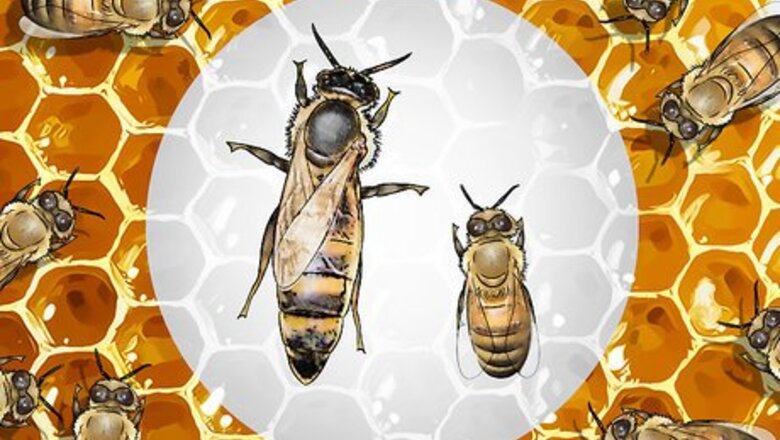
views
Identifying by Sight
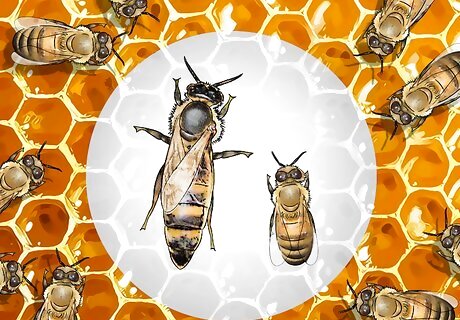
Look for the largest bee. The queen bee will almost always be the largest bee in the colony. Sometimes drones can be as big or even bigger than the queen, but you can tell them apart by thickness. The queen bee will be longer and narrower than any of the other bees.
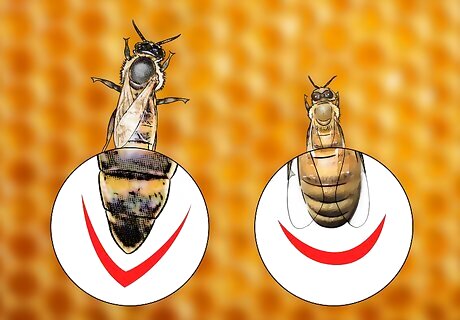
Check for a pointed abdomen. A bee’s abdomen is the lower part of its body, near the stinger. Honeybees have blunt abdomens, but the queen’s abdomen will have a more pointed shape. You can easily tell the queen apart this way.
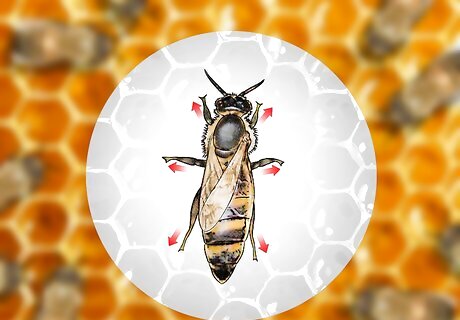
Look for a bee standing with splayed legs. Worker and drone bees have legs that are directly under their bodies--you won’t be able to see much of their legs if you’re looking at them from the top. The queen bee has legs that splay outward, making them much more visible.
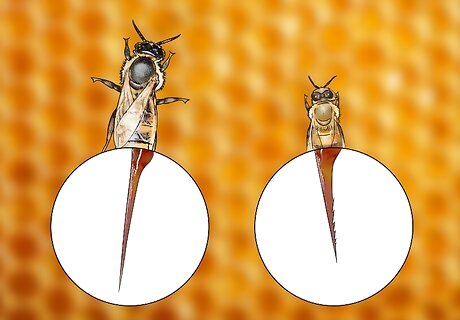
Look for a stinger without barbs. There is only one queen bee per hive. If you find more than one bee that might be the queen, gently lift each bee up by its thorax (the middle of its body). Hold them under a magnifying glass and inspect its stinger. Workers, drones, and virgin queens will have barbs on their stingers. The queen bee’s stinger is smooth and un-barbed.
Looking in the Right Places
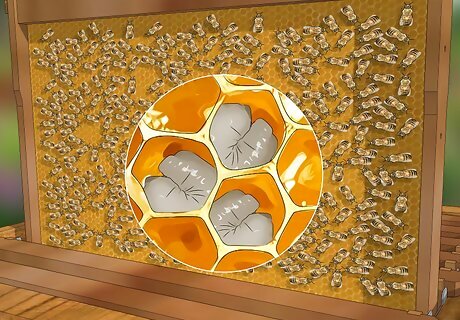
Locate the larvae. Gently remove each hive frame and look for larvae. They look like small white grubs, and you’ll usually see them in piles next to each other. Since the queen lays all the eggs in the colony, she’ll most likely be nearby. Be very careful lifting and replacing the hive frames. You could inadvertently kill the queen.
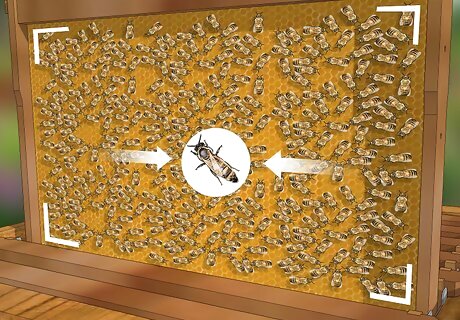
Check for hidden places. The queen bee will not be hanging out on the edge of the hive or outside. She’ll most likely be deep inside the hive, away from outside disturbances. If you have a vertical hive box, she’ll probably be on one of the bottom frames. If your hive is horizontal, look for her towards the center.
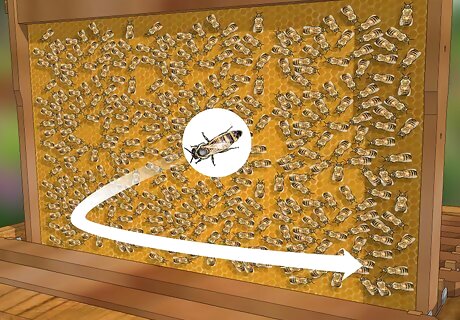
Look for unusual activity in the hive. The queen may move around within her hive. If you notice any unusual activity inside the hive, such as bees clustering together or larvae where you don’t usually see them, the queen may be nearby.
Start in the uppermost box (hive body) and work your way down. It is common for the queen to jump off a frame as you're pulling it out of the hive and go onto the frame below. When you're done looking in a box, place it on the ground and inspect the box below.
Identifying by Behavior
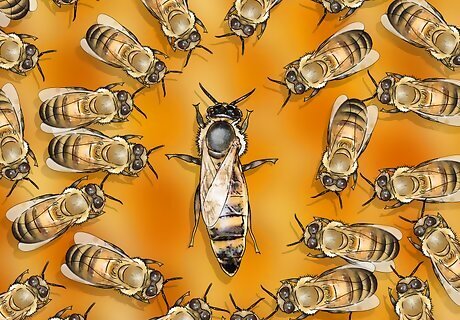
Watch for bees moving out of the way. Workers and drones will always move out of the way when the queen is on the move. After she passes, they’ll cluster together where she was. Keep an eye out for bees moving out of the way.
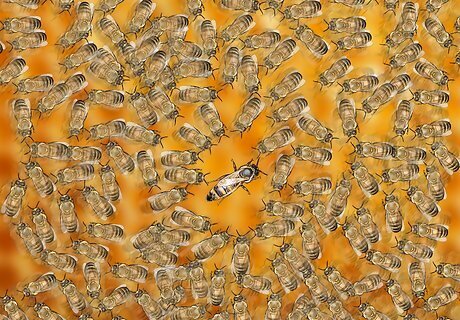
Look for a bee that isn’t doing anything. The queen bee is fed by the rest of the hive and has no duties except for laying eggs. Keep an eye out for a bee that doesn’t seem to have a job. It’s probably the queen.
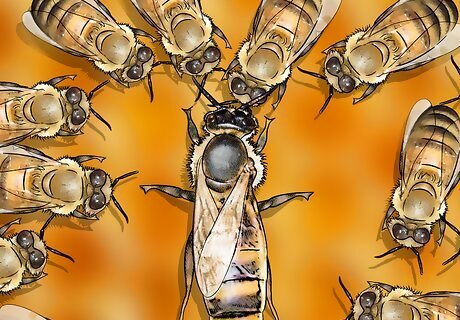
Check if the bees are feeding a particular bee. The queen will have all her needs attended to by the rest of the hive. Look for bees showing attention and providing food for another bee. This may not be the queen--it could be a virgin queen or a young bee--but the odds are good that it’s her.
Marking Your Queen
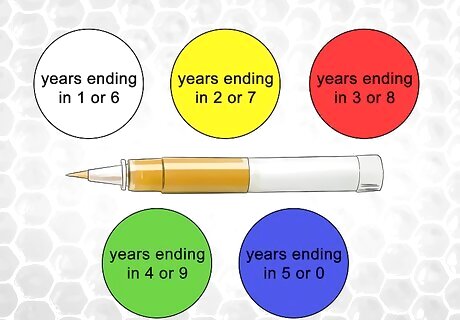
Choose the correct paint color. Beekeepers have designated colors to identify queens born in specific years. This helps you pick out the queen quickly, and to figure out if your hive will need a new queen soon. Be sure to choose the right paint color before marking your queen. Any acrylic-based paint is fine. Many beekeepers use model paint or even paint pens. White paint is used for queens marked in years ending in 1 or 6. If the year ends in 2 or 7, use yellow. Use red for years ending in 3 or 8. Green paint is used for years ending in 4 or 9. Use blue for years ending in 5 or 0.
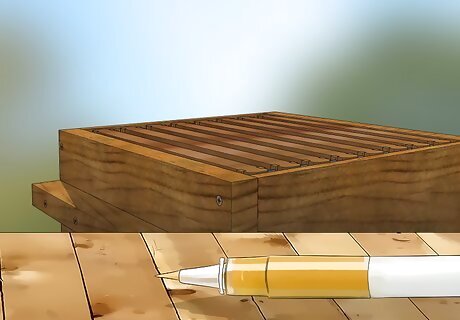
Prepare your paint supplies. Bees can get agitated or even injured if you hold them too long, so be sure your paint is ready for marking before you pick up the queen. Keep the paintbrush or paint pen dipped and ready to go in your other hand or on a small table next to the hive.
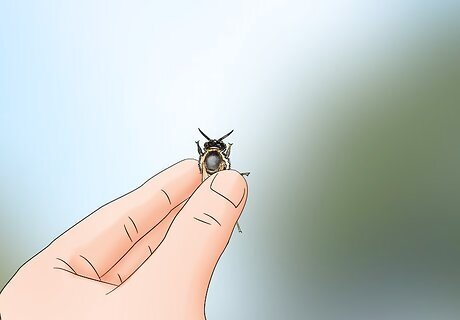
Pick her up gently by the wings or thorax. Gently pick up the queen by her wings or thorax. Be very, very careful when you pick her up--if she struggles, you can accidentally tear her wings or crush her. Some apiaries sell marking kits that let you confine the queen to a small plastic box during marking, but this isn’t a requirement.
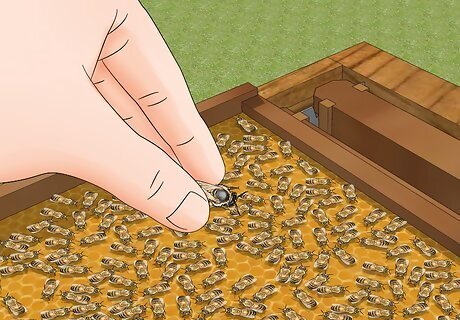
Hold her over the hive. If you accidentally drop the queen, you’ll want her to fall back into the hive instead of in the grass or on your beekeeping suit. Keep the queen held over the hive the entire time you’re working with her.
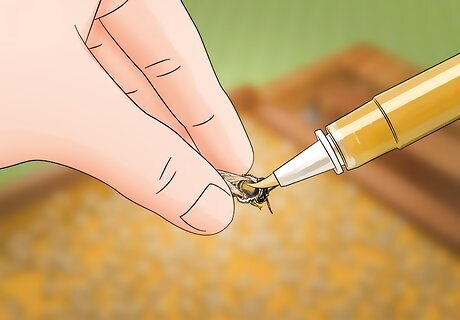
Put a small dot of paint on her thorax. Dab a small dot of paint on her thorax, immediately between her two front legs. Put on enough paint to make your mark visible, but don’t use too much--you could gum up her wings or legs with dried paint.
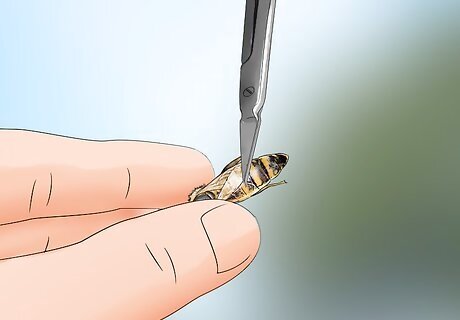
Clip the tips of her wings (optional). Some beekeepers prefer to clip the queen’s wings instead of marking her with paint, but this is optional. If you choose to do this, pick her up gently and trim the bottom quarter of both wings with a small set of beekeeping clippers.

















Comments
0 comment